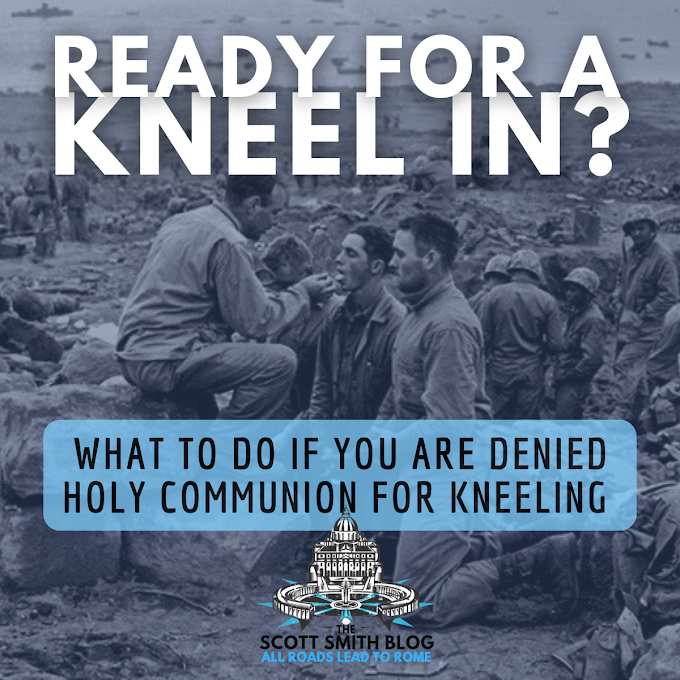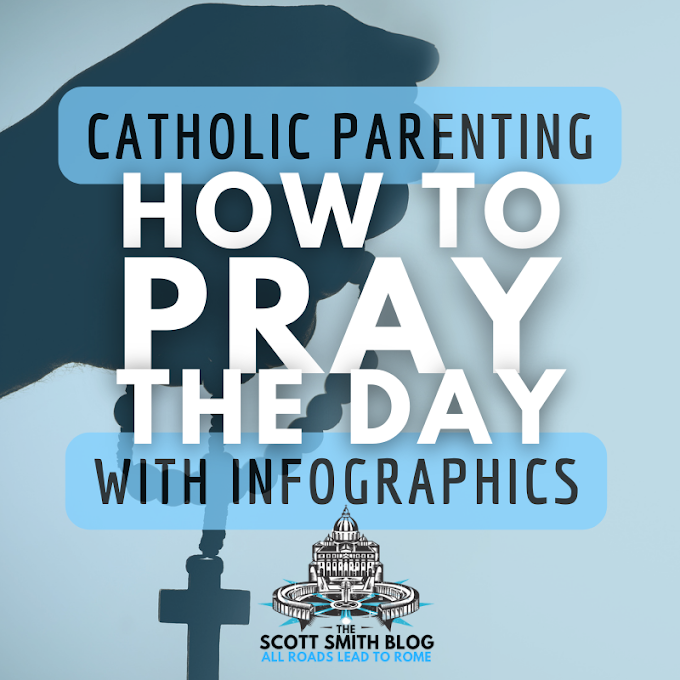What is "the one great thing to love on earth", according to J. R. R. Tolkien, the author of The Lord of the Rings? Find out below and in this series of posts on the Catholic symbolism in The Lord of the Rings.
The Lord of the Rings can't be fully understood without understanding the hidden Eucharistic significance of the novels. What's more, perhaps: J. R. R. Tolkien can't be fully understood apart from his Catholic identity and his devotion to the Eucharist.
The following article forms part of a larger work I have written, The Lord of the Rings and the Eucharist, available now in paperback and ebook versions:

The following article forms part of a larger work I have written, The Lord of the Rings and the Eucharist, available now in paperback and ebook versions:

Eucharistic Symbolism in The Lord of the Rings
The Eucharistic symbolism in Tolkien’s writing runs deep. Since the Eucharist is so deeply entrenched in Scripture, this and the upcoming posts will touch on a number of different subjects. Tolkien’s treatment of the Eucharist is amazingly thorough.Following the "bread crumbs" of the lembas bread will take us back to the Eden of Middle-Earth, where the Two Trees grew. The last surviving descendant of the Two Trees will take us to the last surviving descendant of the Kingdom of Númenor and, ultimately, to the Return of the King ... of Israel.
First, What Did Tolkien Say About the Eucharist?
Here are several quotes from Tolkien regarding the Eucharist. [1] Reading these, one begins to
understand how significant the Eucharist was to Tolkien’s thinking and, what’s
more, his imagining.
Out of the darkness of my life, so much frustrated, I put before you the one great thing to love on earth: the Blessed Sacrament. .... There you will find romance, glory, honour, fidelity, and the true way of all your loves upon earth, and more than that: Death: by the divine paradox, that which ends life, and demands the surrender of all, and yet by the taste (or foretaste) of which alone can what you seek in your earthly relationships (love, faithfulness, joy) be maintained, or take on that complexion of reality, of eternal endurance, which every man's heart desires.
How many of Tolkien’s characters
experience “sagging” faith and require almost “eternal endurance”? And what
nourishes Sam and Frodo on their journey into darkness? The Eucharist, which is
“the only cure”:
The only cure for sagging or fainting faith is Communion. Though always itself, perfect and complete and inviolate, the Blessed Sacrament does not operate completely and once for all in any of us. Like the act of Faith it must be continuous and grow by exercise.
Tolkien also has words of wisdom
for those, like so many of us, that complain of Mass being boring or full of
distractions and so lose track of what really matters:
Frequency [of the Eucharist] is of the highest effect. […] Seven times a week is more nourishing than seven times at intervals. Also I can recommend this as an exercise (alas! only too easy to find opportunity for): make your Communion in circumstances that affront your taste. Choose a snuffling or gabbling priest or a proud and vulgar friar; and a church full of the usual bourgeois crowd, ill-behaved children—from those who yell to those products of Catholic schools who the moment the tabernacle is opened sit back and yawn—open-necked and dirty youths, women in trousers and often with hair both unkempt and uncovered. Go to Communion with them (and pray for them). […] It could not be worse than the mess of the feeding of the Five Thousand—after which our Lord propounded the feeding that was to come. […] It will be just the same (or better than that) as a mass said beautifully by a visibly holy man, and shared by a few devout and decorous people.
What Did Tolkien Say About the Symbolism of Lembas in Lord of the Rings?
J. R. R. Tolkien confirmed the religious significance of the Lembas bread in a letter he wrote to Forrest J. Ackerman in 1958:[2]
In the book lembas has two functions. It is a 'machine' or device for making credible the long marches with little provision, in a world in which as I have said 'miles are miles'. But that is relatively unimportant. It also has a much larger significance, of what one might hesitatingly call a 'religious' kind. This becomes later apparent, especially in the chapter 'Mount Doom' (III 213 and subsequently).
More on this below, including the section on Mount Doom, which Tolkien alludes to above:
The Bread of Life & Lembas Bread
This is how Lady Galadriel described Lembas or Elven
Waybread in the Common Tongue:
Eat little at a time, and only at need. For these things are given to serve you when all else fails. The cakes will keep sweet for many many days, if they are unbroken and left in their leaf-wrappings, as we have brought them. One will keep a traveler on his feet for a day of long labour, even if he be one of the tall men of Minas Tirith.[3]
You can hear echoes of Tolkien’s own words in those of Lady
Galadriel. One wafer, the Lady says, “will keep a traveler on his feet for a
day of long labour.” Or, as Tolkien wrote of the Eucharist, one “taste”
provides for “eternal endurance” to reach that ultimate goal “which every man’s
heart desires.” It will be described in a later section how Lady Galadriel is a
symbol for Mary, and, as such, it is highly significant that she supplies the
fellowship with Eucharistic bread.
Tolkien hints at the Eucharistic significance of the lembas
bread. He wrote that the lembas “also has a much larger significance, of what
one might hesitatingly call a ‘religious’ kind. This becomes later apparent
especially in the chapter 'Mount Doom’.”[4]
Tolkien is likely referring to this passage from the chapter
“Mount Doom”:
As for himself, though weary and under a shadow of fear, [Sam] still had some strength left. The lembas had a virtue without which they would long ago have lain down to die. It did not satisfy desire, and at times Sam’s mind was filled with the memories of food, and the longing for simple bread and meats. And yet this waybread of the Elves had a potency that increased as travellers relied on it alone and did not mingle it with other foods. It fed the will, and it gave strength to endure, and to master sinew and limb beyond the measure of mortal kind.[5]
Relying on the lembas bread alone is reminiscent of the many saints,
including Saint Catherine of Siena during the last years of her life, who
survived by eating the Eucharist alone. Many of the saints survived on the
Eucharist alone during the fasting seasons of Lent and Advent. St. Joseph
Cupertino also lived on the Eucharist alone for five years.
Viaticum, Lembas, and the Bread for the Journey
The lembas is also described as “[feeding] the will” of Frodo
and Sam, who are on the final leg of their journey to Mount Doom.[6]
This strengthening of the will that comes from eating lembas is the effect of
the Viaticum.
The Viaticum is the Last Eucharist given to those who are dying. The Catechism of the Council of Trent describes the Viaticum as follows: "Sacred writers call it the Viaticum as well because it is the spiritual food by which we are supported in our mortal pilgrimage, as also because it prepares for us a passage to eternal glory and happiness.”[7]
The Viaticum is the Last Eucharist given to those who are dying. The Catechism of the Council of Trent describes the Viaticum as follows: "Sacred writers call it the Viaticum as well because it is the spiritual food by which we are supported in our mortal pilgrimage, as also because it prepares for us a passage to eternal glory and happiness.”[7]
But Did Tolkien Intent All This Eucharistic and Christian Symbolism?
It is often cited that J. R. R. Tolkien did not intend Lord of the Rings to be "allegorical".
Tolkien stated in the foreword to the second edition of The Lord of the Rings that "it is neither allegorical nor topical ... I cordially dislike allegory in all its manifestations ... I much prefer history, true or feigned, with its varied applicability to the thought and experience of readers."
This does not mean, however, that Tolkien's works are richly embroidered with Christian symbolism.
In his letters, J. R. R. Tolkien reveals that Lord of the Rings was very much a deeply religious work.
Tolkien's close friend and Jesuit priest, Robert Murray, whose grandfather was Sir James Murray (the founder of the Oxford English Dictionary) wrote Tolkien a letter on this subject. Tolkien responded with the following:[8]
The Lord of the Rings is of course a fundamentally religious and Catholic work; unconsciously so at first, but consciously in the revision. That is why I have not put in, or have cut out, practically all references to anything like 'religion', to cults or practices, in the imaginary world. For the religious element is absorbed into the story and the symbolism.
This is definitive. Tolkien is saying unequivocally that Lord of the Rings is a fundamentally Catholic book, full of Catholic symbolism.
The Lord of the Rings and the Eucharist
Have you enjoyed learning about the Eucharistic meaning in The Lord of the Rings? Check out my book, Lord of the Rings and the Eucharist. Also, please comment and share below!
Also, this is only the beginning! Check out the next post on the "The Hidden Manna".
For more quality Sci-Fi and Fantasy nerdiness, you can check out my articles at Nerdatron.com.
[1] primary source: "#43 From a letter to Michael Tolkien," March 6-8, 1941, The Letters of J. R. R. Tolkien; also described at The Philosophy of Tolkien: The Worldview
Behind The Lord of the Rings, p. 219
[2] "210. From a letter to Forrest J. Ackerman", June 1958, The Letters of J. R. R. Tolkien, edited by Humphrey Carpenter with the assistance of Christopher Tolkien, published by George Allen, London.
[3] The Fellowship of the Ring,
"Farewell to Lorien"
[4] Letters, p. 274-275, 1958.
[5] The Return of the King, Book Six,
Chapter III, "Mount Doom"
[6]
This is also seen as Aragorn, Gimli, and Legolas hunt the orc pack across the
plains of Rohan: “Often in their hearts, they thanked the Lady of Lórien for
the gift of lembas, for they could eat of it and find new strength even as they
ran.” (The Two Towers, Book Three,
Chapter II, “The Riders of Rohan”)
[7] De Euch. sacr., n. 3
[8] "142. To Robert Murray, SJ", December 2, 1953, The Letters of J. R. R. Tolkien, edited by Humphrey Carpenter with the assistance of Christopher Tolkien, published by George Allen, London.

















2 Comments